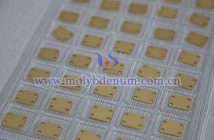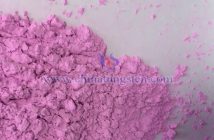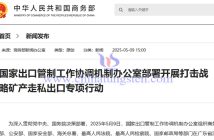Recently, researchers from Donghua University and the University of Glasgow achieved a significant scientific breakthrough by successfully synthesizing two novel giant molybdenum blue wheel-shaped cluster compounds—{Mo85} and {Mo172}. This accomplishment fills a long-standing gap in high-nuclearity the molybdenum oxygen cluster family, specifically the octameric structure, injecting new vitality and momentum into this field of research.

Polyoxometalates (POMs), as a class of inorganic cluster compounds constructed from metal-oxygen building blocks, are widely applied in fields such as catalysis, electronic devices, and medicine, making them a focal point of interest. Giant POMs, containing hundreds of metal centers and possessing dimensions comparable to biomolecules, exhibit structural diversity and multifunctionality that rival complex biological systems. Consequently, developing efficient synthetic strategies to control the self-assembly of giant POMs holds profound significance in scientific research. However, achieving controllable synthesis of giant POMs remains a formidable challenge, with a central difficulty lying in how to introduce new building blocks (BBs) and connect them in a controlled manner to orderly assemble with other structural units.
Molybdenum blue, a typical example of giant wheel-shaped POM clusters, is generally constructed from building units such as {Mo8}, {Mo2}, and {Mo1}. Previously, researchers successfully synthesized a series of molybdenum blue clusters ranging from the decamer {Mo132} to the hexadecamer {Mo176}. However, the synthesis of an octamer had long eluded scientists, primarily due to the difficulty of precisely controlling structural deformation and internal stress during the assembly of an octameric molybdenum blue. The process requires ensuring the orderly arrangement of building units to form a stable ring structure while simultaneously addressing stress accumulation caused by size reduction and overcoming the resulting structural instability.

Electronic device picture
To tackle these challenges, the joint research team from Donghua University and the University of Glasgow took an innovative approach. By ingeniously introducing new building units—{Mo1}, {Mo2}, and a curved pentagonal {Mo6} unit—they successfully induced further contraction and twisting of the wheel-shaped structure. This breakthrough overcame the previous structural limitations of giant molybdenum blue clusters, leading to the first successful synthesis of the octamer {Mo85} and its dimeric derivative {Mo172}. The {Mo85} cluster exhibits a semi-enclosed elliptical structure, while the dimer {Mo172}, formed by the vertical stacking of two {Mo86} clusters, displays a distinctive cross-shaped architecture.
Using advanced techniques such as electrospray traveling wave ion mobility mass spectrometry, the research team confirmed the structural stability of these clusters in solution and revealed their excellent photothermal conversion capabilities in both liquid and solid states. This breakthrough not only enriches the chemical and structural properties of molybdenum-based giant clusters but also provides critical insights for the future development of efficient synthetic strategies.



